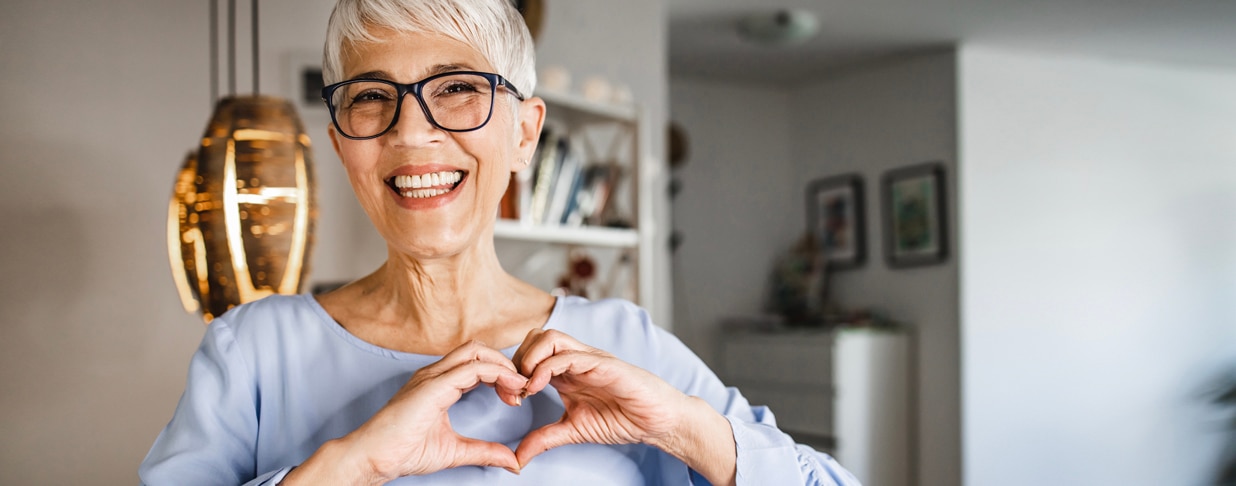Most of us love to enjoy the warm sunshine of the summer, and we’ve learned over the years about the need to protect our skin from the damaging ultraviolet (UV) rays of the sun. But after you slather on the sunscreen, don’t forget: Your eyes need protection, too!
Studies show that long-term exposure to bright sunlight can increase the risk of cataracts and growths on the eye, including cancer, according to The Vision Council.(5) And UV rays reflected off sand and water can cause eyes to sunburn, potentially resulting in temporary blindness in just a few hours. So, in support of the American Academy of Ophthalmology’s UV Safety Month in July, EyeMed wants to remind you and your employees about the importance of UV eye protection and how our benefits make it easy and affordable to stay safe (and stylish) any time the sun is out.
The basic facts of UV, outdoor light and our eyes
The sun gives off 3 types of ultraviolet radiation: UVA, UVB and UVC. The UVA rays, which aren’t filtered by the earth’s atmosphere, can do the most damage to our eyes, according to the World Health Organization. UVB radiation is only partially blocked by the earth’s atmosphere and can also burn the skin and eyes, while UVC is absorbed by the Earth’s atmosphere. (1)
In fact, the sun emits more than 100 times the damaging “blue light” of electronic devices and screens, and, depending on time of day, 25-30% of outdoor light is blue light. These are the sun’s shorter, more energetic rays and what make the sky look blue. Because almost all blue light passes through the cornea and eye lens, it basically sun-bathes the light-sensitive retina if unprotected.(2)
Emerging research points to a possible link between exposure to blue-violet light and age-related macular degeneration—along with other long-term vision issues.(3) When your eyes are exposed to unsafe amounts of blue light, it becomes “harmful.” So, while many of us are seeing stories about how our phones and tablets might affect our vision long-term, we need to think about blue light outdoors, as well. (4)
What most people know and do about UV eye protection
According to The Vision Council, 75% of Americans are concerned about UV exposure, but only 31% wear sunglasses every time they go outside. Plus, they found parents are more likely to wear them (56%) compared to their kids (29%). On top of this lack of wearing proper eye protection, about a third of American adults spend time outdoors between 2 and 4 pm, when UV exposure is at its highest. (5)
The Vision Council also found that Americans have a number of misconceptions about UV protection. For example, darker lenses do not mean higher UV protection, but 39.4% of Americans believe otherwise. (1) The truth is that dark lenses without proper UV protection can be worse than wearing no sunglasses at all! Why? Because darker lenses without adequate UV protection cause the eye's pupil to dilate, which then increases retinal exposure to unfiltered UV. (1)
What’s more, not all sunglasses offer UV protection, so it’s vital to check for a label. Look for labels that say “99% UV protection guaranteed” or “100% protection guaranteed.” Some also might be labeled “UV 400,” which means the lenses block all light rays with wavelengths up to 400 nanometers (this covers all UVA and UVB rays.) (6) Other options like Transitions® photochromic lenses that are clear indoors and turn dark outdoors filter harmful blue light while blocking 100% of UV radiation. (7)
It’s also key to be aware that proper eye (and skin) protection are critical year-round. UV rays aren’t just a seasonal issue. (1)
How EyeMed helps
Keeping eyes safe from UV rays should be a priority for all ages, and at EyeMed we’re proud to say we make it easy and affordable for our members to do just that.
As part of the core benefit, members can choose to use their frame allowance for prescription sunglass frames. Plus, EyeMed members get a 40% everyday second-pair prescription sunglasses discount (note--the second-pair 40% discount does not apply to non-prescription sunglasses, but members can save 20% off non-prescription sunglasses at participating in-network providers.)
There are extra discounts too. With EyeMed Sun Perks, members can get money-saving special discounts at Sunglass Hut. And redeeming those savings is easy--members can redeem their sun savings code online.
For more information, check out our “Sun Savings” member flier and watch this short video about how our special offers help members get more bang for their benefits buck.
At EyeMed, we believe our members’ futures are bright. So, we make it easy for them to wear shades.
BL-1807-CB-673
1. “UV Eye Protection,” Vision Council, accessed June 17, 2018.
2. “Blue Light and Your Eyes,” Prevent Blindness, https://www.preventblindness.org/blue-light-and-your-eyes.
3. Dillon, James, et al., Transmission of light to the aging human retina: possible implications for age related macular degeneration, Experimental Eye Research, Volume 79, Issue 6, December 2004, Pages 753 – 75.doi:110.1016//j.exer.22004.06.025.
4. “Electronic Devices, Blue Light and What’s Needed in a Vision Plan,” BenefitsPro magazine, 2016, accessed June 19, 2018.
5. “Spare Your Sight: Using Shades for Protection and Style,” Vision Council, 2016 UV Protection Report, accessed June 19, 2018.
6. All About Vision, “Sunglasses: Frequently Asked Questions,” 2014
7. “VS: Blue Light Special,” BenefitsPro magazine, 2016, accessed June 19, 2018.




